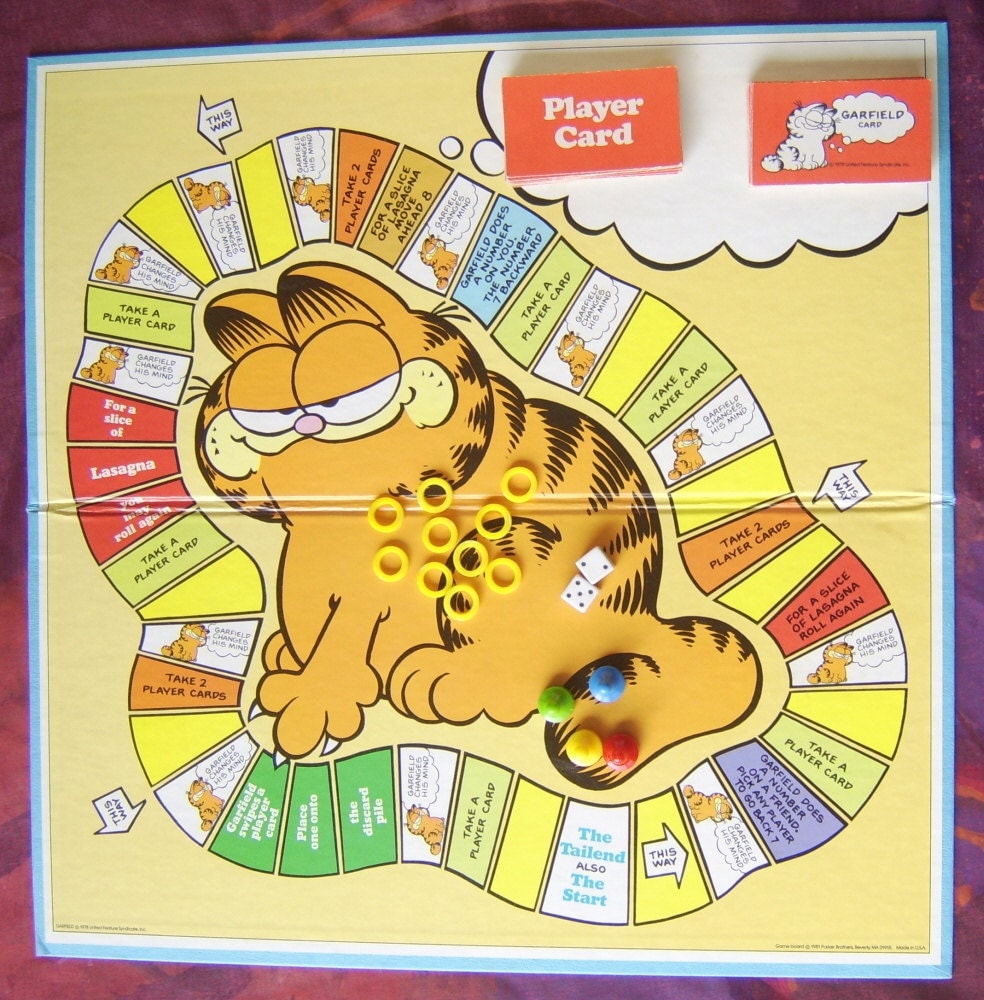
Otherwise, Garfield's only other abilities are jumping, or dashing by pressing a direction twice. Garfield can collect stones which can be thrown in an awkward arc motion - these are your primary and *only* method of attack. At the end of an area, a battery is collected in order to continue. Garfield must navigate through eight "levels" (these are made up of several parts), simply making it from left to right and occasionally defeating an enemy. Those dithered sprites and messed up backgrounds? Just blame The Glitch. Sloggy game speed? The Glitch wanted to make things harder for Garfield. The shoddy controls? That's because The Glitch made it that way. Because the main villain of the game is the embodiment of a game glitch, all issues, mistakes, and problems encountered by playing the game can be explained away as "The Glitch did it". The only way to get out of the television is to defeat The Glitch. The missing parts cause an enemy named The Glitch to appear, who sucks Garfield into the television. Garfield repairs the TV set but does so without using all of the parts. After an altercation, Garfield and Odie manage to break their owner Jon's television. The story of the game is refreshingly clever. Considering all this, somehow the game still manages to contain some sturdy platforming goodness even though it is very limited in scope. All of the animations have been significantly shrunk, the sprites contain awful dithering and the backgrounds are a garbled mess. The Game Gear version, however, was coded by Novotrade (they ceased operations in 2006 - a fitting punishment), and suffers considerably due to the limited hardware of the Game Gear. The Genesis version reviewed at just above average at the time and was considered by many outlets as an unoriginal platformer. This 16-bit platformer featured game code written by SEGA themselves, with artwork hand-drawn by Jim Davis (a similar situation to the Genesis version of Aladdin, where the animation frames were drawn by hand and then painstakingly digitized into game sprites).

In the early nineties, Garfield: Caught in the Act scrambled its way onto the Sega Genesis. Overnight, Garfield made so much money for Jim Davis and all the failed former farmhand had to do was crank out another Garfield comic of dubious quality and watch the money PAW in.

His design altered, the focus of the comic strip changed, and the birth of the Garfield "brand". was founded and along with it, what made Garfield unique was cast aside.

In that review, I explained how Garfield was turned from a popular comic strip into a multimedia franchise along with extensive merchandising.

I've written about Garfield before for Random Access, having reviewed the middling Nintendo DS title Garfield's Nightmare.


 0 kommentar(er)
0 kommentar(er)
